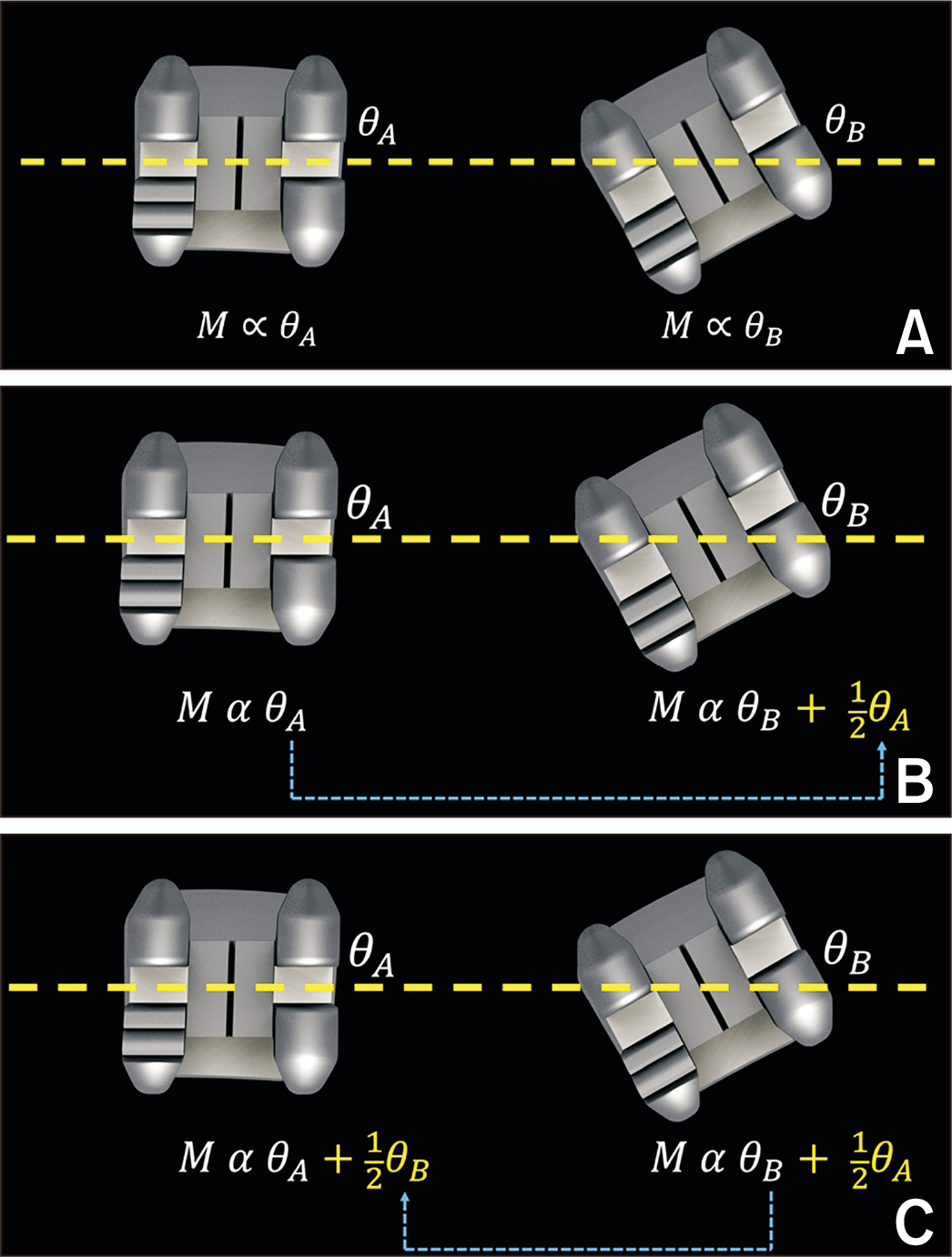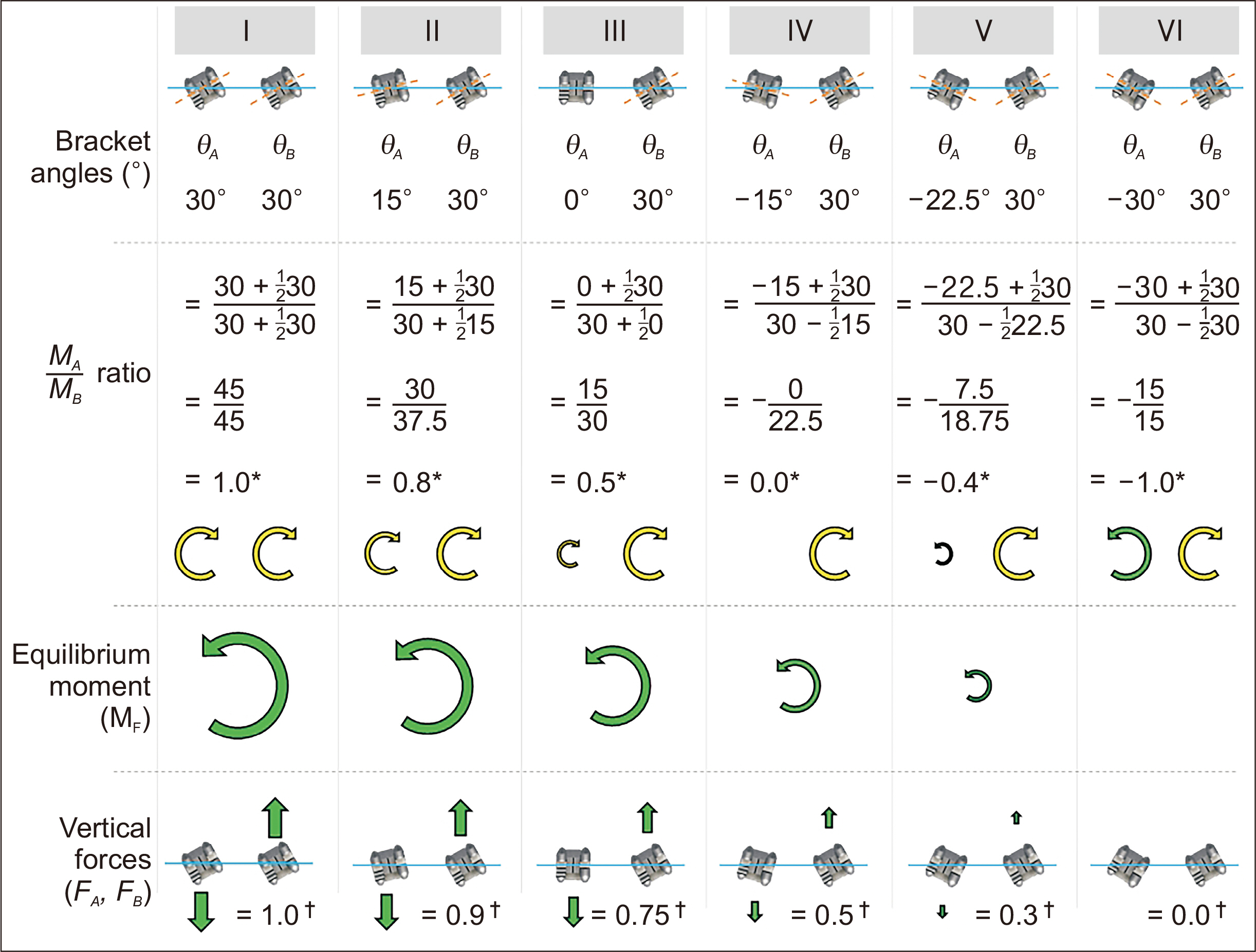Korean J Orthod.
2020 Sep;50(5):356-359. 10.4041/kjod.2020.50.5.356.
The six geometries revisited
- Affiliations
-
- 1Discipline of Orthodontics, Department of Oral Sciences, Faculty of Dentistry, University of Otago, Dunedin, New Zealand
- 2Private Practice, Salerno, Italy
- 3Sir John Walsh Research Institute, Faculty of Dentistry, University of Otago, Dunedin, New Zealand
- KMID: 2506470
- DOI: http://doi.org/10.4041/kjod.2020.50.5.356
Abstract
- Forces and moments delivered by a straight wire connecting two orthodontic brackets are statically indeterminate and cannot be estimated using the classical equations of static equilibrium. To identify the mechanics of such two-bracket systems, Burstone and Koenig used the principles of linear beam theory to estimate the resulting force systems. In the original publication, however, it remains unclear how the force systems were calculated because no reference or computational details on the underlying principles have been provided. Using the moment carry-over principle and the relative angulation of the brackets, a formula was derived to calculate the relative moments of the two brackets. Because of the moment equilibrium, the vertical forces that exist as a forcecouple on the two brackets can also be calculated. The accuracy of the proposed approach can be validated using previously published empirical data.
Keyword
Figure
Reference
-
1. Lindauer J. 2001; The basics of orthodontic mechanics. Semin Orthod. 7:2–15. DOI: 10.1053/sodo.2001.21053.
Article2. Burstone CJ, Koenig HA. 1974; Force systems from an ideal arch. Am J Orthod. 65:270–89. DOI: 10.1016/S0002-9416(74)90332-7. PMID: 2923317.
Article3. Burstone CJ, Choy K. Burstone CJ, Choy K, editors. 2015. Forces from wires and brackets. The biomechanical foundation of clinical orthodontics. Quintessence Publishing;Chicago: p. 332.4. Cross H. 1930. Analysis of continuous frames by distributing fixed-end moments. Paper presented at: American Society of Civil Engineers Annual Convention. 1930 Jul 9-11; American Society of Civil Engineers;Cleveland, USA. New York: p. 919–28.
- Full Text Links
- Actions
-
Cited
- CITED
-
- Close
- Share
- Similar articles
-
- Correlation between microleakage and screw loosening at implant-abutment connection
- Mechanical and geometric features of endodontic instruments and its clinical effect
- Genesis revisited
- Loca lization of Myocardial Ischemia with Exercise Electrocardiography: Revisited?
- Diabetic kidney disease, revisited: where do we stand?




